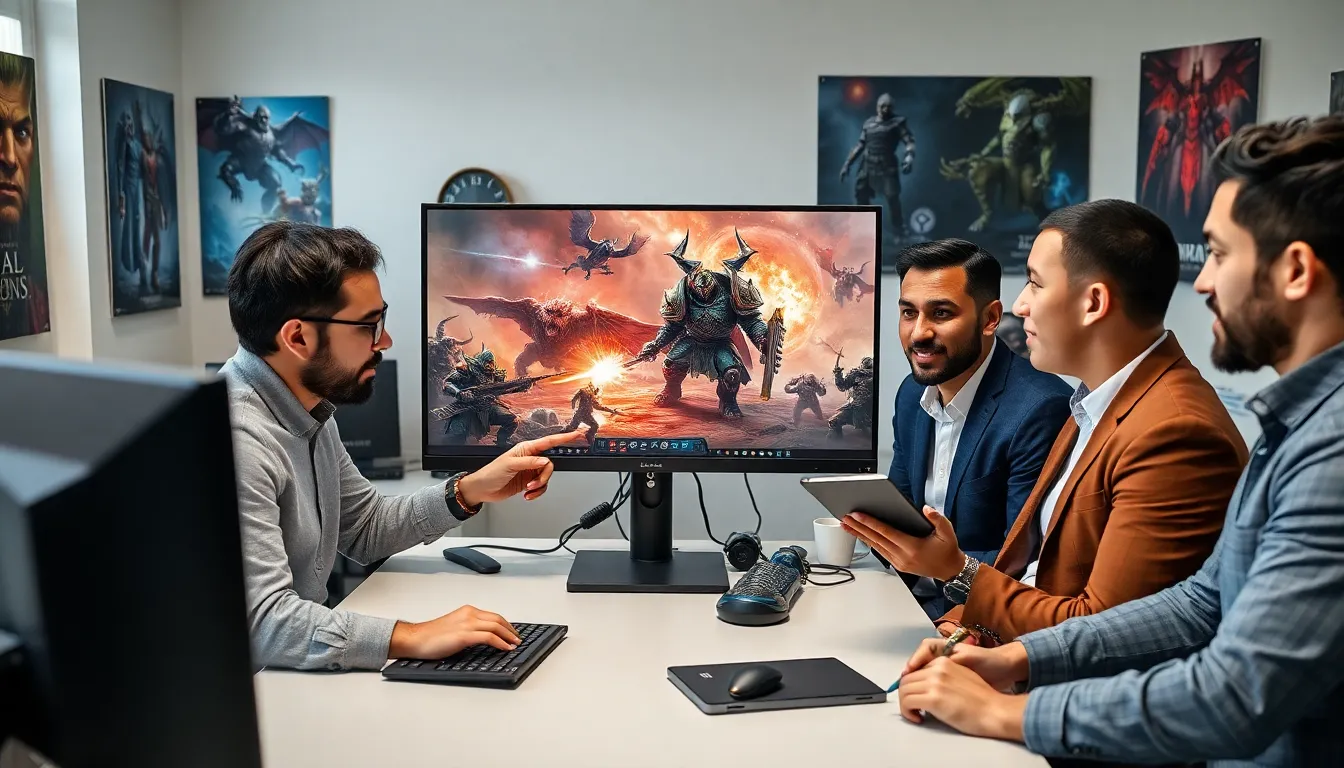Welcome to the wild world of blockchain, where even the word ‘bit’ means more than a simple fragment. Jump into Bitclassic Blockchain, a game-changer in the digital space, bringing together innovation and reliability like never before. You might wonder, what’s making everyone buzz about this technology? Buckle up, because we’re about to unearth everything you need to know about Bitclassic Blockchain and its champion, Stacy Klinger.
Table of Contents
ToggleWhat Is Bitclassic Blockchain?

Bitclassic Blockchain, at its core, is a decentralized platform designed to provide secure and transparent transactions across its network. Unlike traditional blockchain systems, Bitclassic offers unique protocols that enhance user experience while maintaining the integrity of the system. Essentially, it’s like the Swiss Army knife of blockchain, you have multiple tools for different needs, wrapped up in a sleek package.
Also, this technology operates on a peer-to-peer basis, meaning transactions can be conducted directly between users without an intermediary. It leverages cryptographic security to ensure that every transaction is recorded in an immutable ledger. This approach not only fosters trust but also promotes a sense of ownership among users, which is a concept that is gaining traction in today’s digital landscape.
In this ever-evolving space, Bitclassic stands out by integrating various features that enhance functionality while supporting a vast array of applications.
Key Features of Bitclassic Blockchain
Several standout features define the Bitclassic Blockchain, appealing to both developers and end-users alike. These include:
- Decentralization: Unlike traditional systems governed by a single entity, Bitclassic is built on a completely decentralized network. This enhances reliability and reduces risks of fraud.
- Scalability: With efficient transaction processing, Bitclassic can handle a high volume of transactions without latency issues. This is crucial for businesses seeking rapid growth.
- Interoperability: The platform allows seamless integration with other blockchain networks. This means users can easily transfer assets between different blockchains, making it versatile.
- Smart Contracts: Automation is made possible through smart contracts, which execute transactions automatically when preset conditions are met. This reduces the chance of errors and expedites processes.
- Robust Security: Utilizing advanced cryptographic methods, Bitclassic ensures that all data on its blockchain is secure and tamper-proof.
The Role of Stacy Klinger in Bitclassic Blockchain
Stacy Klinger has been a pivotal figure in the development and promotion of Bitclassic Blockchain. As a visionary leader, she has fostered collaboration among top developers, researchers, and stakeholders to enhance the platform’s capabilities.
Her understanding of the blockchain landscape enables her to identify emerging opportunities and threats, allowing Bitclassic to stay ahead of the curve. She leads with a blend of transparency and innovation, which not only builds trust but also inspires the team to push boundaries.
Besides, Klinger is known for her commitment to education and awareness within the blockchain community. Through webinars, articles, and public talks, she empowers others to understand the potential that Bitclassic Blockchain holds. Her leadership is not just about steering technology: it’s about nurturing a culture of growth and exploration.
Technological Innovations by Bitclassic Blockchain
At the heart of Bitclassic Blockchain lies a suite of technological innovations designed to improve efficiency and user experience. Notably,
- Consensus Mechanism: Bitclassic employs a unique hybrid consensus algorithm that combines the best of both Proof of Work (PoW) and Proof of Stake (PoS). This hybrid approach reduces energy consumption while maximizing network security.
- Atomic Swaps: This feature allows users to exchange cryptocurrencies from different blockchains without relying on a centralized exchange. It significantly enhances liquidity and user control over assets.
- Layer 2 Solutions: These solutions elevate transaction speed by processing them off the main blockchain while still benefiting from its security features. This ensures that the platform can accommodate growing demand without hampering performance.
Use Cases and Applications
The versatility of Bitclassic Blockchain opens doors to various use cases across industries. Here are some notable applications:
- Finance: From peer-to-peer lending to decentralized finance (DeFi) applications, Bitclassic enables users to manage their financial assets more efficiently.
- Supply Chain Management: Transparency and traceability are vital in supply chain operations. Bitclassic can provide immutable records of every transaction, from production to delivery, ensuring accountability.
- Healthcare: Secure patient records can be managed on the blockchain, allowing authorized professionals to access data while protecting patient privacy. This contributes to better healthcare delivery and resource management.
- Gaming: With the rise of blockchain gaming, Bitclassic facilitates in-game asset trading directly among players, enhancing ownership and engagement.
Challenges and Future of Bitclassic Blockchain
Even though its numerous advantages, Bitclassic Blockchain is not without challenges. Regulatory uncertainty remains a significant hurdle. As governments around the world work to craft legislation for blockchain, the future could hold both opportunities and constraints.
Also, user adoption is a critical barrier. While the technology is promising, educating the general public about how to use it and the benefits it offers is crucial for widespread acceptance.
Looking ahead, the future of Bitclassic Blockchain is ripe with potential. Innovations in governance models and increased collaboration with traditional industries can position it as a leader in the blockchain space. As it continues to evolve, catering to user feedback and emerging needs will be vital.




